#South Asia subcontinent
Text
The Tomb of Shah Rukn e Alam World UNESCO Architecture Sites
The Tomb Of Shah Rukn-E-Alam Located In Multan, Pakistan, Is The Mausoleum Of The 14th-Century Punjabi Sufi Saint Sheikh Rukn-Ud-Din Abul Fateh.
The Tomb of Shah Rukn e Alam World UNESCO Architecture Sites
The shrine is considered the earliest example of Tughluq architecture and is one of the most impressive shrines in the Indian subcontinent. The shrine attracts over 100,000 pilgrims to the…

View On WordPress
#Architecture#Bahauddin Zakariya#calligraphic motifs#example of Tughluq architecture#Is The Mausoleum Of The 14th-Century Punjabi Sufi Saint Sheikh Rukn-Ud-Din Abul Fateh#Multan#Pakistan#Punjabi Sufi Saint Sheikh Rukn-Ud-Din Abul Fateh#Shah Rukn-E-Alam#South Asia subcontinent#South Asian#Sufi Saint Sheikh Rukn-Ud-Din Abul#The Tomb Of Shah Rukn-E-Alam Located In Multan#UNESCO Architecture Sites#World UNESCO Architecture Sites
0 notes
Text
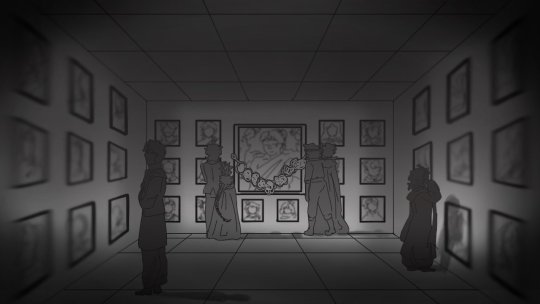
hetalia south asian ocs stuff again, this time with 6 out of the 19 I have
#aph india#hws pakistan#aph Pakistan#he's on the left#hws Bangladesh#aph Bangladesh#he's on the right#in the middle are india + some indian UTs#hetalia oc#hetalia ocs#hws india#hws south asia#the people in the pictures are also countries . they're not actual people .#I have a flow chart for all of the subcontinent ocs incase anybody wants to see it and hear me infodump#my art#hetalia ut ocs
24 notes
·
View notes
Text
youtube
#The Indian subcontinent#the great landmass of South Asia#is the home of one of the world’s oldest and most influential civilizations.#Youtube
2 notes
·
View notes
Text
Sanskrit Language - संस्कृतम्
Who Speaks Sanskrit?
Here's the thing - the answer to the aforementioned question is that...no one speaks Sanskrit. Or rather - almost. Sanskrit is spoken by 1% of the population in India, where it is mostly spoken by Hindu priests. It, along with Tamil, Kannada, Telugu, Malayalam and Odia, have been declared as "Classical Languages" by the Indian government.
How is Sanskrit Related to Other Languages Spoken Today?
Sanskrit is said to have influenced in some way all of the languages currently spoken in India, usually via vocabulary. Sanskrit's most notable influence is on Hindi - Hindi is said to be "Sanskritised Hindustani" while Urdu, Hindi's counterpart, is said to be "Persianized Hindustani".
Which Alphabet Does Sanskrit Use?
Sanskrit primarily uses a variant of the Devanagari alphabet (sample text pictured), though regional alphabets have also been used to write Sanskrit such as the Thai alphabet and the Kashmiri script. when the language was more widespread.

Sanskrit in Religion
Sanskrit has prominently been used in Hinduism, Jainism, and Buddhist texts. As mentioned before, Hindu priests often use Sanskrit while in Buddhism and Jainism, Sanskrit words are the origins of certain terms.
Sanskrit Day (Vishva-samskrita-dinam)
Every full moon day of the Shravan month on the Hindu calendar since 1969, Sanskrit day has been officially celebrated in India. The Indian government recognized this day to celebrate, promote and maintain the Sanskrit language. In 2022, this day falls on August 11.
Sources: Sanskrit Language + further reading, World Sanskrit Day wikipedia, Classical Languaes in India, Indian Perspective on Sanskrit, Sanskrit Britannica, Sanskrit Omniglot.
#sanskrit#education#teaching#language#language learning#linguistics#langblr#lingblr#india#indian subcontinent#indian culture#culture#languages#foreign languages#asian languages#south asian#south asia#asia#bharat#hindi#sanskrit language#sanskrit day#my posts
4 notes
·
View notes
Text
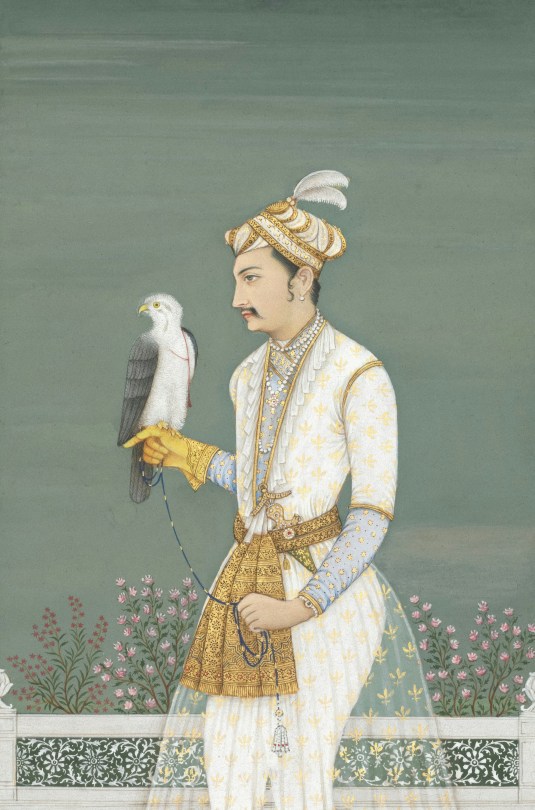
Portrait of a Prince with a Hawk | 18th Century
Mughal miniature, gum tempera and gold on paper
#art#mughal painting#mughal miniature#mughal empire#portrait#hawking#1700s#18th century#18th century art#south asia#south asian art#south asian art history#south asian royalty#early modern history#indo muslim#indian subcontinent#💮💮#curators on tumblr
1 note
·
View note
Photo

Recipe for Gulab Jamun or Kala Jam Waffle Balls
Gulab jamun are like deep-fried waffle balls soaked in a rosewater sugar syrup. They're a South Asian bite-size dessert popular on special days.
0 notes
Text
New Book - "Subcontinent Adrift: Strategic Futures of South Asia" by Feroz Hassan Khan
New Book – “Subcontinent Adrift: Strategic Futures of South Asia” by Feroz Hassan Khan
As India and Pakistan commemorate 75 years on independence today, the new book Subcontinent Adrift: Strategic Futures of South Asia by Feroz Hassan Khan, is a timely, much-needed publication, which Professor Sharad Joshi at the Middlebury Institute of International Studies at Monterey commends as “an important volume on the India-Pakistan rivalry [that] provides a rich and timely perspective on…
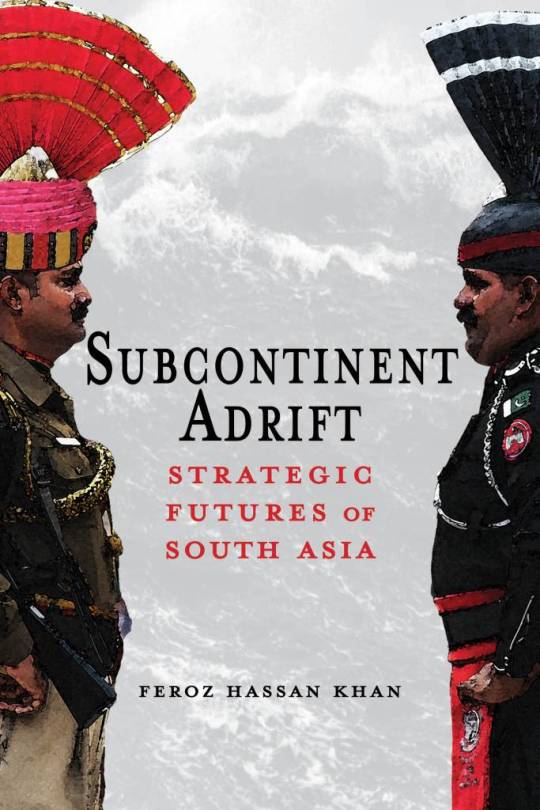
View On WordPress
#Conflict and Security#Feroz Hassan Khan#International Relations#international security#Security Studies#South Asia#Subcontinent
0 notes
Text
In addition to my Monkey Man post from earlier, the always kind & sweet Aparna Verma (author of The Phoenix King, check it out) asked that I do a thread on Hijras, & more of the history around them, South Asia, mythology (because that's my thing), & the positive inclusion of them in Monkey Man which I brought up in my gushing review.
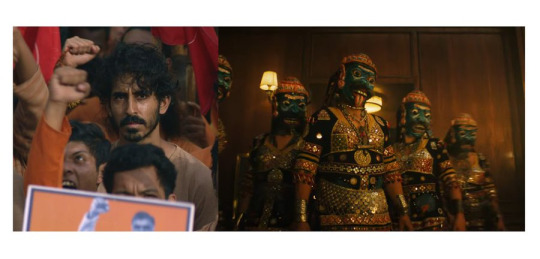
Hijra: They are the transgender, eunuch, or intersex people in India who are officially recognized as the third sex throughout most countries in the Indian subcontinent. The trans community and history in India goes back a long way as being documented and officially recognized - far back as 12th century under the Delhi Sultanate in government records, and further back in our stories in Hinduism. The word itself is a Hindi word that's been roughly translated into English as "eunuch" commonly but it's not exactly accurate.
Hijras have been considered the third sex back in our ancient stories, and by 2014 got official recognition to identify as the third gender (neither male or female) legally. Pakistan, Nepal, Bangladesh, and India have accepted: eunuch, trans, intersex people & granted them the proper identification options on passports and other government official documents.
But let's get into some of the history surrounding the Hijra community (which for the longest time has been nomadic, and a part of India's long, rich, and sometimes, sadly, troubled history of nomadic tribes/people who have suffered a lot over the ages. Hijras and intersex people are mentioned as far back as in the Kama Sutra, as well as in the early writings of Manu Smriti in the 1st century CE (Common Era), specifically said that a third sex can exist if possessing equal male and female seed.
This concept of balancing male/female energies, seed, and halves is seen in two places in South Asian mythos/culture and connected to the Hijra history.
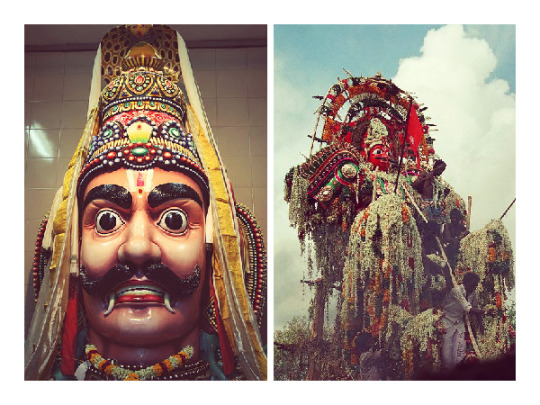
First, we have Aravan/Iravan (romanized) - who is also the patron deity of the transgender community. He is most commonly seen as a minor/village deity and is depicted in the Indian epic Mahabharata. Aravan is portrayed as having a heroic in the story and his self-sacrifice to the goddess Kali earns him a boon.

He requests to be married before his death. But because he is doomed to die so shortly after marriage, no one wants to marry him.
No one except Krishna, who adopts his female form Mohini (one of the legendary temptresses in mythology I've written about before) and marries him. It is through this union of male, and male presenting as female in the female form of Mohini that the seed of the Hijras is said to begun, and why the transgender community often worships Aravan and, another name for the community is Aravani - of/from Aravan.
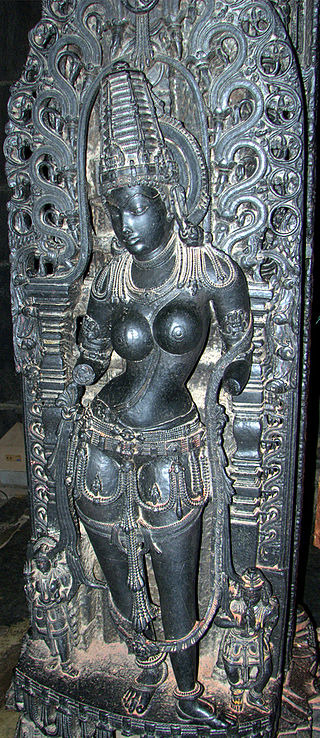
But that's not the only place where a gender non conforming divine representation can be seen. Ardhanarishvara is the half female form of lord Shiva, the destroyer god.
Shiva combines with his consort Parvarti and creates a form that represents the balancing/union between male/female energies and physically as a perfectly split down the middle half-male half-female being. This duality in nature has long been part of South Asian culture, spiritual and philosophical beliefs, and it must be noted the sexuality/gender has often been displayed as fluid in South Asian epics and the stories. It's nothing new.

Many celestial or cosmic level beings have expressed this, and defied modern western limiting beliefs on the ideas of these themes/possibilities/forms of existence.
Ardhanarishvara signifies "totality that lies beyond duality", "bi-unity of male and female in God" and "the bisexuality and therefore the non-duality" of the Supreme Being.
Back to the Hijra community.
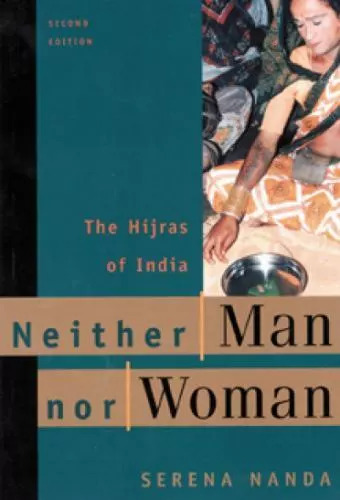
They have a complex and long history. Throughout time, and as commented on in the movie, Monkey Man, the Hijra community has faced ostracization, but also been incorporated into mainstream society there. During the time of the Dehli Sultanate and then later the Mughal Empire, Hijras actually served in the military and as military commanders in some records, they were also servants for wealthy households, manual laborers, political guardians, and it was seen as wise to put women under the protection of Hijras -- they often specifically served as the bodyguards and overseers of harems. A princess might be appointed a Hijra warrior to guard her.

But by the time of British colonialism, anti-Hijra laws began to come in place folded into laws against the many nomadic tribes of India (also shown in part in Monkey Man with Kid (portrayed by Dev Patel) and his family, who are possibly
one of those nomadic tribes that participated in early theater - sadly by caste often treated horribly and relegated to only the performing arts to make money (this is a guess based on the village play they were performing as no other details were given about his family).
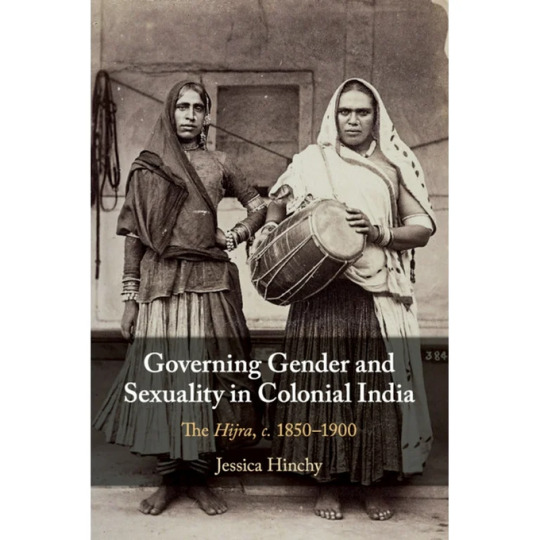
Hijras were criminalized in 1861 by the Indian Penal Code enforced by the British and were labeled specifically as "The Hijra Problem" -- leading to an anti-Hijra campaign across the subcontinent with following laws being enacted: punishing the practices of the Hijra community, and outlawing castration (something many Hijra did to themselves). Though, it should be noted many of the laws were rarely enforced by local Indian officials/officers. But, the British made a point to further the laws against them by later adding the Criminal Tribes Act in 1871, which targeted the Hijra community along with the other nomadic Indian tribes - it subjected them to registration, tracking/monitoring, stripping them of children, and their ability to sequester themselves in their nomadic lifestyle away from the British Colonial Rule.
Today, things have changed and Hijras are being seen once again in a more positive light (though not always and this is something Monkey Man balances by what's happened to the community in a few scenes, and the heroic return/scene with Dev and his warriors). All-hijra communities exist and sort of mirror the western concept of "found families" where they are safe haven/welcoming place trans folks and those identifying as intersex.
These communities also have their own secret language known as Hijra Farsi, which is loosely based on Hindi, but consists of a unique vocabulary of at least 1,000 words.
As noted above, in 2014, the trans community received more legal rights.
Specifically: In April 2014, Justice K. S. Radhakrishnan declared transgender to be the third gender in Indian law in National Legal Services Authority v. Union of India.
Hijras, Eunuchs, apart from binary gender, be treated as "third gender" for the purpose of safeguarding their rights under Part III of our Constitution and the laws made by the Parliament and the State Legislature. Transgender persons' right to decide their self-identified gender is also upheld and the Centre and State Governments are directed to grant legal recognition of their gender identity such as male, female or as third gender.
I've included some screenshots of (some, not all, and certainly not the only/definitive reads) books people can check out about SOME of the history. Not all again. This goes back ages and even our celestial beings/creatures have/do display gender non conforming ways.
There are also films that touch on Hijra history and life. But in regards to Monkey Man, which is what started this thread particularly and being asked to comment - it is a film that positively portrayed India's third sex and normalized it in its depiction. Kid the protagonist encounters a found family of Hijras at one point in the story (no spoilers for plot) and his interactions/acceptance, living with them is just normal. There's no explaining, justifying, anything to/for the audience. It simply is. And, it's a beautiful arc of the story of Kid finding himself in their care/company.
#hijra#trans representation#monkey man#dev patel#transgender#trans rights#trans rights are human rights#third sex#indian history#indian culture#colonialism#imperialism#south Asian mythos#South Asian myths#Aravan#Iravan#Mahabharata#hindu mythology#hindu gods#kali goddess#krishna#hindu mythology art#Ardhanarishvara#Shiva#Parvarti#sexuality#gender fluid#fluid sexuality#trans community#transgender rights
425 notes
·
View notes
Photo
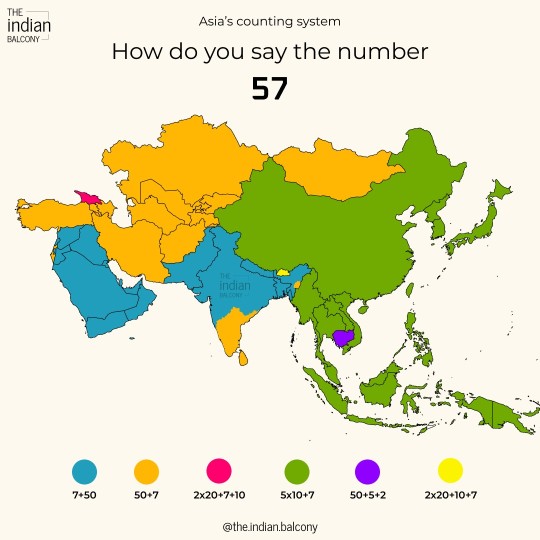
How do you say the number 57?
Taking Asia's case in point, different countries call numbers in different structures in their languages.
The Northern Indian Subcontinent and The Arabian peninsula, would say the units digit first, followed by the tens digit. Like in Hindi, 64 would be Chausath (Chau:4, Sath:60) or Chaushatti (Chau:4, Shatti:60) in Bengali.
While the South of India and Manipur along with Central Asia would say 57 with the tens digit first followed by the units place- as fifty seven, much like in English. So in Tamil, 57 is Ambathi eḻu (Ambathi: 50, eḻu:7) or Malayalam Ampathi ezhu (Ampathi: 50, ezhu:7).
Much of East and South East Asia follows a basic form of number structures. For Example in China, 57 is broken down into 5x10+7 and would be called Wǔshíqī (Wǔ:5, Shí:10, Qī:7). 63 would be 6X10+3. In Cambodia, the number system has been simplified further with Number Names existing just for 1 to 5 and the Tens. 6 is called 5+1, 7 is called 5+2.
Finally to the systems that are farthest from the usual. With Bhutan and Georgia both following a vigesimal system or a 20 base system, just like French. Where in 77 would be called 3x20+10+7. Mind boggling calculations.
Numbers are much more diverse than we think they are. @loverofgeography created a post on how numbers are called in Europe, this one shows Asia's Diversity.
by the.indian.balcony
629 notes
·
View notes
Text
Kabru from Dungeon Meshi's Ethnic origin

(Masterpost of evidence available here now!)
I've seen folks talking about this, which makes me SOOOOO happy. I've been trying to tell people that Kabru is *some kind* of fantasy version of Indian since at least March of 2023, which is when I finished reading what was available of Dungeon Meshi at the time. You may have seen my post in the Kabru tag about his name suggesting that he's of Nepali origin!
I'll go into this in a LOT more detail when I finally publish my big Dungeon Meshi research paper (soon, I promise, I hope), but this is such a wonderful win for Kabru fans that I wanted to make a post about it!
So many helpful fans were able to identify the sweet Kabru's trying to talk about is rasgulla, which means I didn't have to actually do any research to figure it out like I normally would have. Though since I know Kabru's meant to be from someplace like India, it wouldn't have been hard to search for "Indian dessert white ball" and figure it out.
Rasgulla (literally "syrup filled ball") is a dessert popular in the eastern part of South Asia. It is made from ball-shaped dumplings of chhena dough, cooked in light sugar syrup. This is done until the syrup permeates the dumplings.
While it is near-universally agreed upon that the dessert originated in the eastern Indian subcontinent, the exact locus of origin is disputed between locations such as West Bengal, Bangladesh, and Odisha.
The name rasgulla is derived from the words ras ("juice") and gulla ("ball"), and other names for the dish include rasagulla, rossogolla, roshogolla, rasagola, rasagolla, and rasbhari or rasbari.
Rasbari is the name of it in Nepal, so I think that's probably what Kabru would have called it if Milsiril hadn't interrupted him.
#kabru#dungeon meshi#delicious in dungeon#dunmeshi#also I don't think any of the elves are meant to be white but I'll get into that later when I'm ready to publish my research#(that doesn't make what Milsiril is doing to Kabru any less horrible though obviously)#theories#Dungeon Meshi Research
398 notes
·
View notes
Note
what are your asoiaf culture/race headcanons?
ooo im siberian starks truther forever, or just general indigenous arctic circle north. general aesthetics of slav/kievan rus. like kokoshnik ushanka and ryasna are canon to me. harsh, stilted syllables like in russian.
the riverlands is the balkans + ireland to me for sure, cat is so irish to me. i think of like south slav folk costume for them :) lots of ribbons and embroidery and intricate braiding. lilting accent
i like east asian targs :) but also like, they just arent any earthen race to me. hate when people are like "erm they cant be coloured cos they have purple eyes and silver hair?" and its like do white people have purple eyes and silver hair??????
the dornish are a mix of indian subcontinent+west asia+sephardic/mizrahi jewish+palestine+turkish+arab. the melting pot of westeros! like the daynes are jewish to me, and the rhoynar are arab/turk/'moorish'. yronwoods are white latines. sea of dorne/narrow sea evokes the mediterannean :) dornish is described as melodic and drawling, def lots of rolled Rs
stormlands is very german+eastern europe. maybe im jsut thinking of oktoberfest but i always think of them bundled up. lots of headdresses. harsh accent.
vale of arryn is very anglo to me. french/english/swiss/etc. yodelling on the mountains. sweet and sing-song accent.
westerlands is italy to me cos i like thinking of the borgias and lannisters. lannisport gives off SUCH florence/venice vibes.
the reach is again quite meditteranean to me. maybe its the wine? but i hc the tyrells as black, i think the dynamic of "upjumped stewards" compared to the "blue-blooded" hightowers, florents, etc is interesting. its why i also hc the manderlys as black, since they're from the reach :)
iron islands... obviously norse/viking, but i like pasifika headcanons too. i like asha with moko kauae and i just love if the ironborn have cultural tattooing practices. this is lessened by how they do not at all have a pacific climate lol.
51 notes
·
View notes
Note
Is A desi? :0
No. I'm going to assume this is a well-meaning ask, and answer it as such, though I'm admittedly baffled as to how you arrived at the idea.
I have seen fans in the past conflate things like this, sometimes well-meaning fans of color themselves, and sometimes white fans who don't bother to do accurate research and dress their Crowns in saris and things like that. So for clarity, let me just specify that SWANA (the Middle East) =/= South Asia.
Culturally, Arsur encompasses SWANA cultures only, with a focus on Kurdish cultures, not South Asian cultures. They are two different things.
The Indian subcontinent is an entirely separate region with entirely different ethnicities. Yes, there's some cultural overlap due to proximity and exchange, but again, they are not the same thing.
It's actually a racist trope to conflate Middle Eastern cultures with that of South Asia, in part thanks to properties such as Disney's Aladdin. So I would ask fans to avoid making this mistake as much as possible, out of respect for both regions.
#ask#anonymous#faq#A is kurdish as are all the LIs and the MC#swana fans can add their own cultures to their MCs of course#but the LIs are all kurdish period
159 notes
·
View notes
Text
Queer Glossary of Muslim/Islamic World:
This is a list of gender & sexuality related terms, used in Muslim/Islamic World.
Mithli/Mithly - postmodern Arabic term for queer folks
Mithliya - feminine form word “Mithli”, refers to lesbians, sapphics, queer women
Mu’khanath/Mukhannas/Mukhannath/Mukhannathun/Mukhannathin - archaic Arabic term for gender variants, trans woman, trans femme, individuals of non-normative gender and/or sexuality
Mukhannith - classical Arabic term for transsexual woman
Mutarajilat/Mutarajjil/Mutarajila - archaic Arabic term for butch,trans man, trans-masculine. It is masculine equivalent of word “Mukhannath”
Mustargil/Mustarjil/Mustarajil/Mustarajilla/Mustarajjila- vernacular term for trans male/trans-masculine folks in Marsh Arab
Mabun/Maabun - archaic Arabic term for an eunuch homosexual, passive homosexual in Medieval Islamic Arab.
Khanith/Khaneeth/Xanith/Makhanith - vernacular term for transgender femme, gender non-confirming, queer in Arabian Peninsula & Gulf countries. The Khanith is also a third gender/sex community of Arabian peninsula.
Khuntha/Khunsha - archaic Arabic term used to describe intersex & ambiguous gender individuals in Muslim World.
Khuntha Mushkil - term for non-binary & gender non-confirming intersex individuals.
Khasi/Khasee - archaic term for eunuchs in Arabic/MENA Islamic empires
Khusra/Khusray/Khusaray/Khusara - Pejorative word for eunuch transgender, gender non-confirming individuals in Pakistan & Northernmost India. The word derived from Punjabi
Murat/Muraat/Morat/Moorat - vernacular term for transgender, eunuch, gender-diverse folks in Pakistan. It is also used in some parts of Afghanistan.The word Murat is itself a portmanteau of Mard (meaning man) and Aurat (meaning woman)
Hijra/Hijre/Hijjara/Hijarah/Hijada – all-encompassing term for gender & sexual diverse folks in the Indian subcontinent. The term includes trans femme, mtf transsexual, masculine woman, effeminate gay man, cisgendered drag queen, androgyne, transvestite, queer, eunuch, non-binary & intersex individual
Khawaal - term for MTF transvestite dancers,Effeminates in Pre-mordern Egypt.
Köçek - archaic Turkish term for effeminate male, androgynous male gender fluid dancers in Ottoman society. The term also refers to feminine boys regardless of their sexual orientation. “Cengi” is female counterpart of Köçek.
Khawaja sara/Khwaja sara/Khwaja sira/Khawajasira/Khwaja sera/Khwaja sarayi/Khaja sarah - Persian archaic term used to describe a range of gender identities, including trans femme, gender fluid, non-binary, effeminate (mukhannas), eunuch, trans-masculine, and trans-feminine individuals in South Asia. It goes beyond being just a gender or sexual identity; it is also associated with gender spirituality or Sufi tariqah. This term was historically used to designate trans and non-binary individuals in Medieval Muslim empires. Nowadays, the term khawaja sara/khwajasara has become a subset of Hijra
Kothi - pejorative slang term for effeminate men, gay transvestites, drag queen, passive homosexuals in Indian subcontinent. In pakistan, kothis are referred as “Zenana”.
Panthi - slang term for dominant, hard, masculine gay & bisexual male in Bangladesh, Pakistan & India. This term derived from to Hijra Farsi or Ulti Bhasha
Parikh/Paarikh - slang term refers to boyfriend & husband in Bangladesh. This word is mostly used among LGBTQ+ population
Dohpartaa or Dohpartah - informal, slang term for bisexual in Bangladesh & West Bengal. The word derived from the Hijra Farsi or Ulti language.
Mamsuh - Arabic term for intersex person, who is agender or genderless.
Hum Jins, Hum jinsi, Ham-jense, Ham-jens – homosexual in Urdu, Persian, Tajik language
Ham-jins bâz/Ham-jens bâz – a derogatory term for gays in Farsi-speaking communities.
Ham-jens-garâ - slurr for homosexual in Farsi
Ham-jins garo - pejorative term for homosexuals in Tajikistan
Do jens garâ/Doh jense garâ - term for bisexual in Farsi
Mak Nyah - term for transgender woman, MTF transsexual in Malaysia. The term “Mak Nyah” is widely used among trans women, mukhannath/ trans-feminine folks. The term was first coined in late 1980s.
Pak Nyah - informal,vernacular term for trans men in Malaysia.
Waria - vernacular term for Transgender & trans woman in Indonesia.Warias are considered as third gender in Indonesia.
Priawan - vernacular term for trans-masculine in Indonesia.
Bissu - a term used to describe non-binary or two spirit identity in Bugie Tribe of Indonesia
Boyah/Boyat - a term used in persian gulf states to describe masculine women,butch, & AFAB gender non-confirming
Burnesha - vernacular term used to describe trans-masculine,butch in Ottoman empire of balkan & Albania.
Chokri/Chukri - term for drag queens, transvestites, transfeminine folks who are associated with “Alcap” folk song & sufi devotional music. This cross-gender cultural phenomenon can be found in Bangladesh & North-west Bengal. Chukri artists may identify themselves as straight, bisexual, gay, transsexual. Muslim Chukris are devotee of sufi saint Madar Pir/Madari Pir.
Zenana/Jenanah - vernacular term for effeminate male,MTF transvestite in Bangladesh,Pakistan,Northern India.The term Zenana derived from Urdu or Farsi, which means feminine.
Bachaa posh - pejorative term for FTM crossdresser, butch in Afghani dialect
Bacha Bareesh - pejorative vernacular term for effeminate boy, passive homosexual,transgender folks in Afghanistan. Bacha Bareesh are effeminate boys,MTF drag queens who take part in Bacha bazi.
Gej – non-derogatory term for gays in Balkan regions. It is used in Bosnia & Herzegovina, Albania, Kosovo, Serbia, Macedonia, Romania.
Dygjinishëm - Albanian term for bisexual
90 notes
·
View notes
Note
Feel free to point me to google, but I was wondering if you could elaborate on mughal rulers not colonizing India? For context I’m a Nri moved to USA when I was very young so I’m very divorced from Indian history outside of accepted propaganda narratives from family, that I am unlearning.
the point is that the mughals did in fact invade and conquer a huge chunk of the indian subcontinent (the farthest south they ever got to was the deccan) but they did not colonise india. however, they did not colonise india. that would be the british
also the mughals more or less assimilated into south asia. however the british had a very different relationship with south asians (which was literally racism. they also heavily exploited the lower castes, artisans and weavers. and ofc, how can i forget the bengal famine. or churchill's racism)
21 notes
·
View notes
Text
The divine blend of spices needed to make curry first reached Southeast Asia about 2,000 years ago, when the region began trading with the Indian subcontinent, according to an analysis of ancient spice residue.
The new project analyzed 12 different spice grinding tools unearthed at the ancient trading port of Oc Eo, in modern-day Vietnam, by washing them with water and chemicals. This produced hundreds of tiny fragments that the researchers painstakingly identified (to a reasonable degree of certitude) under a microscope. The results sounded like a shopping list for making curry: turmeric, ginger, fingerroot, sand ginger, galangal, clove, nutmeg and cinnamon.
“These spices are indispensable ingredients used in the making of curry in South Asia today,” the paper says.
Ancient Trading Spices
Where did all these spices comes from?
They could have come from the surrounding countryside. Farmers in Southeast Asia made many of these crops themselves, and if not, they could have imported the seeds and gotten started.
On the other hand, the turmeric could have easily come from India, where use of the spice dates back thousands of years. And the ginger and cloves may have come from India as well, or maybe China.
Cinnamon was widely traded at the time and may have come all the way from Israel.
The galangal, fingerroot and sand ginger are native to Southeast Asia and could easily have come from nearby soils. These more specialized spices are still used in the region’s curry paste.
Footed Grinding Slabs
As a testament to the spice trade’s popularity, the spice grinders made up the majority of the stone tools recovered from Oc Eo and another, nearby city called Angkor Borei. The original archaeological dig at Oc Eo found numerous footed grinding slabs, which look like little stone workbenches for grinding spices – which is what they likely were. Versions of these slabs are still sometimes used in the traditional preparation of curry.
The largest slab recovered measured 2.5 feet by 1 foot. Researchers found it buried not far from a piece of charcoal that dated to about A.D. 250, which hinted at when curry first made its way to the area.
Oc Eo
At that time, the city would have been not just importing and exporting goods but making them as well, according to the paper. Residents raised religious monuments and shaped metal tools, glass jewelry and pottery.
All the while, they would have worked to trade and process many different spices. Archaeologists working there even found an intact nut that dated to about A.D. 200, and it still “yielded a nutmeg aroma,” the paper says.
Now part of Vietnam, Oc Eo once belonged to the ancient kingdom of Funan, which maintained a base of power further up the Mekong River.
In Oc Eo, culture prospered between the first and eighth centuries, during the latter years of the Iron Age. As the site’s ancient canals filled with ships, Buddhism and Hinduism left their own marks on the sprawling complex, including a possible contribution to curry cooking. The need to dye the Buddhist monks’ robes yellow may have first prompted Oc Eo to import turmeric, the paper says.
78 notes
·
View notes
Text

Ganjifa, a Persian card game that has been popular in the Indian subcontinent since the sixteenth century, is notable for its hand-painted playing cards. The name Ganjifa likely derives from the Persian word ganj, meaning treasure or money. The game has several variations across West, Central and South Asia.
The oldest surviving reference to Ganjifa in India was made in the early fifteenth century by the historian Ibn Taghribirdi, who wrote that a Mamluk sultan gambled with kanjifa (a medieval Arabic name for Ganjifa) as a young man.
#hindu mythology#mythology#19th century#literature#modern art#museums#ancient persia#card game art#mythoprofessori
71 notes
·
View notes